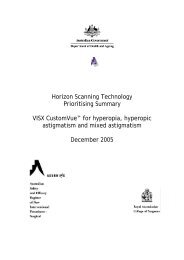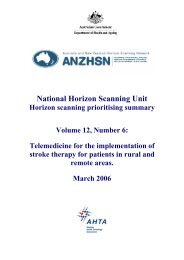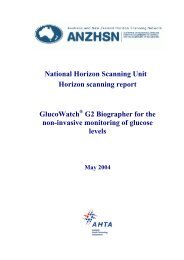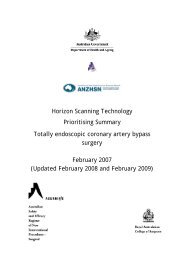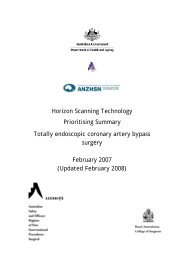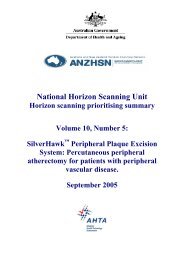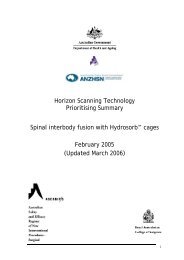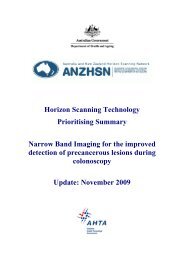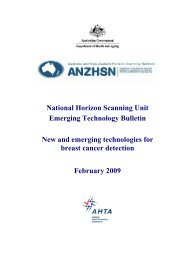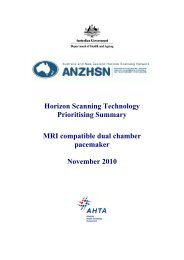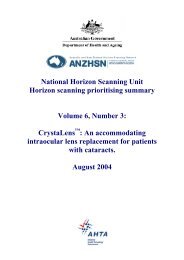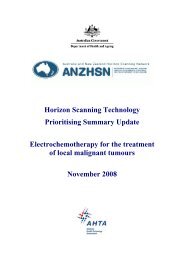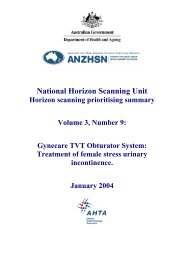eFlow® Rapid neubliser for the treatment of patients with cystic fibrosis
eFlow® Rapid neubliser for the treatment of patients with cystic fibrosis
eFlow® Rapid neubliser for the treatment of patients with cystic fibrosis
You also want an ePaper? Increase the reach of your titles
YUMPU automatically turns print PDFs into web optimized ePapers that Google loves.
children and adolescents to a CF outpatient clinic was 4.8 (median 4) and <strong>for</strong> adults5.8 (median 5). According to data obtained from <strong>the</strong> CF register, 51.7 per cent <strong>of</strong> allCF <strong>patients</strong> were hospitalised at least once during 2008. Nearly two per cent <strong>of</strong><strong>patients</strong> were hospitalised more than six times in 2008. The majority <strong>of</strong>hospitalisations were <strong>for</strong> respiratory causes (Cystic Fibrosis Australia 2010).During 2008, 69 per cent <strong>of</strong> CF <strong>patients</strong> had at least two sputum samples analysed <strong>for</strong>infection. Of those <strong>patients</strong> tested, 53 per cent were positive <strong>for</strong> Pseudomonas, <strong>with</strong>38 per cent <strong>of</strong> <strong>the</strong>se positive <strong>for</strong> Pseudomonas aeruginosa. The prevalence <strong>of</strong>Pseudomonas infection is lower in children than in adults, young children <strong>with</strong> CF aremore likely to be positive <strong>for</strong> Staphylococcus aureus infection than adults. Haemophilusinfluenzae was also present in a high proportion <strong>of</strong> children, <strong>with</strong> 25 and 23 per cent <strong>of</strong>children aged 0-4 and 5-9 years infected, respectively. Thirteen per cent <strong>of</strong> children aged0-4 years were also infected <strong>with</strong> Escherichia coli (Cystic Fibrosis Australia 2010).In New Zealand, rates <strong>of</strong> CF are similar as to those in Australia <strong>with</strong> approximately one in25 New Zealanders <strong>of</strong> Caucasian origin being a carrier. CF is rare in Polynesians. Of allbirths in New Zealand, approximately one in 3000 to 3,500 infants will be born <strong>with</strong>CF. Currently <strong>the</strong>re are more than 400 children and adults living <strong>with</strong> CF in NewZealand (Cystic Fibrosis Association <strong>of</strong> New Zealand 2010). No o<strong>the</strong>r data from NewZealand could be identified.DIFFUSIONApproximately 5-600 eFlow ® <strong>Rapid</strong> nebulisers have been sold direct to <strong>patients</strong> inAustralia (personal communication Technipro-PulmoMed Pty Ltd).COMPARATORSThe main <strong>treatment</strong>s <strong>for</strong> CF <strong>patients</strong> aim to maintain lung function by <strong>the</strong> removal <strong>of</strong>mucus secretions from <strong>the</strong> lungs and to unblock airways. Physio<strong>the</strong>rapy is an integralpart <strong>of</strong> this <strong>treatment</strong> pathway <strong>with</strong> most CF <strong>patients</strong> undergoing 2-4 sessions per dayin <strong>the</strong> home environment. Techniques such as chest percussion, vibrations and o<strong>the</strong>rphysical manipulations are per<strong>for</strong>med <strong>with</strong> <strong>the</strong> patient required to be in specificpostures to facilitate mucus expulsion. Specific breathing techniques also play animportant part in CF <strong>the</strong>rapy. Controlled breathing <strong>with</strong> or <strong>with</strong>out specific devices isalso used to maintain lung function (Cystic Fibrosis Australia 2009b; Cystic FibrosisAustralia 2009a). Pharmaceutical <strong>treatment</strong> options may include <strong>the</strong> use <strong>of</strong>conventional nebulisers which use ei<strong>the</strong>r compression or jet propulsion to delivermedication, however <strong>the</strong>se devices have relatively poor antibiotic delivery efficiency(approximately 30%) (Traini & Young 2009). These nebulisers require a compressorwhich in turn requires ei<strong>the</strong>r a mains-operated power supply <strong>of</strong> a large battery and are<strong>the</strong>re<strong>for</strong>e relatively large, bulky and noisy in comparison to <strong>the</strong> vibrating membranenebulisers (Lass et al 2006).6 eFlow <strong>Rapid</strong> nebuliser: November 2010



